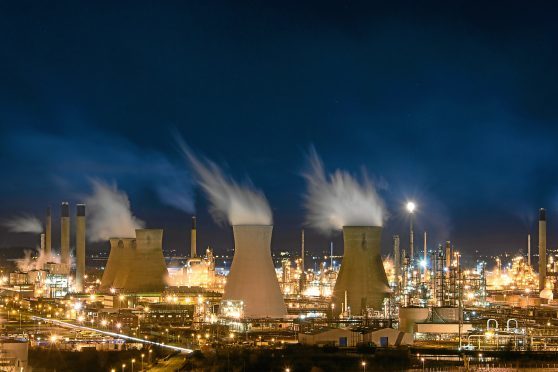Inside the SNP bubble this week the focus has been on the party itself yet again but in the world beyond the conference hall patience with Scotland’s ruling party is wearing thin.
A poll last week revealed that only a fifth of voters have confidence in the Nationalists’ economic case for independence and nearly half believe Nicola Sturgeon and her predecessor, Alex Salmond, produced misleading figures in their bid to break up Britain.
No wonder the SNP is fast losing the support of the Scottish public, which is angered by its mishandling of devolved matters, such as the NHS, education, and the police, and increasingly embittered about paying for such ineptness with the highest taxes in the United Kingdom.
Last week the party dealt Scotland another blow when Ms Sturgeon ignored all expert opinion and decided to ban fracking in this country. The message to investors is loud and clear: Scotland is closed for business.
But it won’t be ministers who suffer as a result of the separatists’ aversion to progress, nor will it be their mostly middle class cheerleaders in the tiny green movement, a political force that has lost its relevance nationwide.
It will be the thousands of families already struggling to pay exorbitant energy bills as they subsidise the inefficiencies of the renewables industry. It took an octogenarian politician to spell out to his younger colleagues in the SNP this inequity and lambast their “total madness” in rejecting technological advance.
Jim Sillars – a former deputy leader of the party who celebrated his 80th birthday a week ago – said he was willing to lead a challenge against what he called a nonsensical ban that will deprive households of a reduction in their heating costs.
“The situation is that poorer families will freeze in their homes this winter while rich farmers coin it for having wind turbines on their land,” said Mr Sillars. “It’s a long time since I’ve been so angry at a decision and I know it will have a very profound effect.”
The frustration over Ms Sturgeon’s fracking announcement last Wednesday was felt by many, not least the industrial players who had their cheque books poised, waiting to pour money into Scotland.
Ineos – the Grangemouth-based petrochemical giant, which is importing shale gas from the US – has long said it would make more sense to extract gas locally. The company had bought exploration rights to hundreds of square miles of land in Scotland but had been stymied by the SNP’s moratorium, in place for more than two years before Ms Sturgeon’s most recent decision.
‘Beggars belief’
Tom Pickering, Ineos Shale’s operations director, said the ban “beggars belief” and accused the SNP of having “turned its back on a potential manufacturing and jobs renaissance”.
Ineos predicted that, over the next two decades, some £33 billion could be invested in England – where drilling is permitted – with Scotland losing out on thousands of jobs as the oil industry declines. Ken Cronin, chief executive of UK Onshore Oil and Gas, said the Scottish Government, in ignoring the advice of its own independent experts, “prefers a future where gas will have to be imported with the damage that will do to the economy and the environment”.
He added: “It turns its back on job creation, skills development, an increase in tax receipts and investment in communities. Over the last 20 years, 30 wells have been drilled and produce gas within the Central Belt, without any impact to the natural environment or public health.”
Scottish ministers were reportedly invited to see for themselves shale operations in the US, where the sector has transformed lives, slashing fuel bills, along with the Americans’ dependency on oil-rich, but not necessarily politically sympathetic, nations. Needless to say, our political leaders didn’t go, nor did they acknowledge the hypocrisy of refusing to exploit domestic resources on apparently environmental grounds while continuing to import shale gas from Donald Trump’s America.
Steamrollering
The SNP insisted that it conducted a public consultation on fracking, which found overwhelming opposition. But, as Courier letter writers have observed in the past week, this so-called opposition came from organisations such as Friends of the Earth and Greenpeace and there has been no serious debate on the issue.
How did the SNP become so disconnected from the people it claims to represent? The way the Nationalists have conducted the fracking fiasco, steamrollering objections to get their own way, is pretty much the way they conduct every aspect of government.
So desperate is Sturgeon for the backing of six Green MSPs to prop up her collapsing argument for secession that she has abandoned an entire new industry and the potential benefits it could bring.
This ban, with its far-reaching consequences, proves once and for all that the Nationalists believe their own interests must be prioritised at the expense of Scotland’s.










